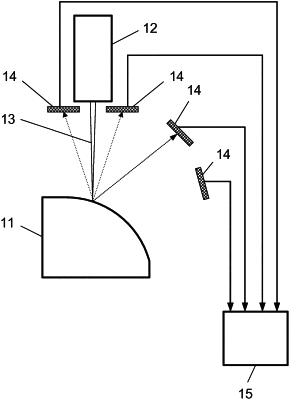| CPC B23K 15/08 (2013.01) [B23K 15/0013 (2013.01)] | 5 Claims |

|
1. A method for smoothing a surface region on a component that consists of an electrically conductive material at least within the surface region, the method comprising:
scanning the surface region of the component within a vacuum chamber by at least one focused electron beam with a first surface energy that causes the component material within the surface region to fuse;
scanning the surface area prior to fusing at least twice by the at least one electron beam, in each case with a different focal length of the at least one electron beam;
setting a second surface energy for the at least one electron beam that does not cause the component material in the surface region to fuse;
recording data by a plurality of sensors arranged within the vacuum chamber, the data characterizing the electrical current caused by backscatter electrons impacting the sensors;
deriving, with an analysis device, an actual value for the roughness within the surface region from the data recorded by the sensors, wherein the actual value for the roughness is compared with a target value for the roughness, and a value for the first surface energy is determined as a function of the comparison result when the actual value for the roughness has not reached the target value for the roughness; and
scanning the surface region thereafter by the at least one electron beam with the first surface energy, whereupon the method is continued with the scanning the surface area prior to fusing.
|